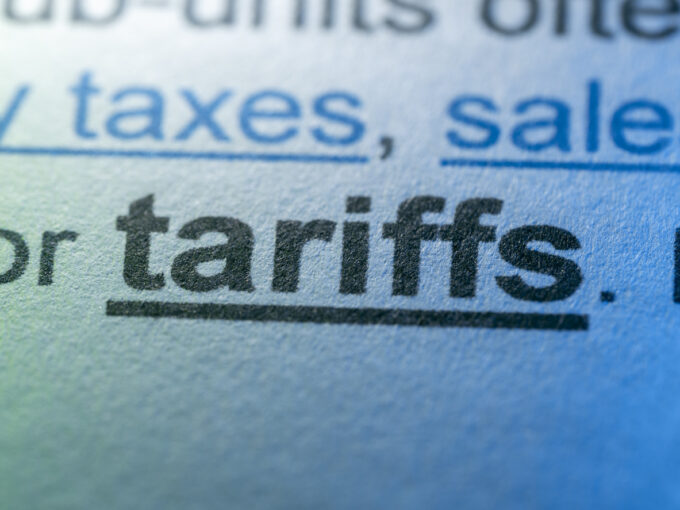
It has been a crazy and volatile year when it comes to import tariffs. From the tariffs threats to the implementation to the pauses on certain tariffs, you never know what you are going to wake up to from one day to the next. Last week was no different. On May 28, the US Court of International Trade (CIT) struck down the Trump Administration’s IEEPA tariffs. So, what does this mean for importers?
Why Were the Tariffs Blocked?
The US CIT found that the tariffs were unlawful, and the President exceeded “any authority granted” by the International Emergency Economic Powers Act (IEEPA) in imposing the import tariffs. President Trump elected to use the IEEPA to implement these tariffs because he wouldn’t need Congressional approval to do so, but this act is to address “unusual and extraordinary” external threats to national security, foreign policy or economy of the U.S. upon declaration of a national emergency under the National Emergencies Act (NEA).
The court stated that the tariffs that were implemented on Canada, Mexico, and China to combat the illegal drug flow into the United States “fail because they do not deal with the threats set forth in those orders.” The judges ordered the government to stop collecting these tariffs and gave the White House 10 days to complete the formal process of stopping the tariffs. The Trump Administration immediately appealed the ruling to the U.S. Court of Appeals.
Are all of the Additional Tariffs Going to be Stopped?
While importers would like a reprieve on any and all of the tariffs that have been implemented so far this year, the court’s decision specifically applies to the tariffs that were imposed under the IEEPA. These include:
- IEEPA Fentanyl Tariffs on Chinese Products
- These were first introduced in February at 10% and then increased to 20% in March. This includes the removal of the de minimis exemption for low-value goods.
- IEEPA Fentanyl/Border Tariffs on Mexican and Canadian Products
- This was set at 25% and was implemented in March, with minimal exceptions for energy products/potash and USMCA qualifying goods.
- IEEPA Reciprocal Tariffs
- This applied a 10% tariff on goods from all countries except Canada and Mexico and went into effect in April. The country-specific rates were paused on Apil 9 for 90 days. The China reciprocal tariff was as high as 125% but is now currently 10% due to a 90-day pause that went into effect on May 14.
The court ruling does not encompass the Section 232 tariffs on steel, steel derivatives, aluminum, aluminum derivatives, automobiles, and automobile parts; these will remain in place, as will the China Section 301 tariffs implemented in 2018.
What’s Next?
Before you start asking, “Can I get a refund for the tariffs I already paid?”, there are other things to consider.
There is a 10-day period before the ruling takes effect, and most likely, the Trump Administration will try to stop the tariffs before that time frame is up. With the appeal being filed to the U.S. Court of Appeals, we will have to wait and see if they choose to reinstate the tariffs or uphold the CIT’s ruling. Depending on the outcome of the appeal decision, you can probably guarantee that if the decision is not favorable for the Trump Administration, that it will be appealed again and go to the U.S. Supreme Court to make the final ruling.
Could Tariffs be Imposed Differently?
Absolutely, they can and most likely will if President Trump wants to continue his tariff barrage. There are several different outlets where President Trump could do so.
- Section 122 of the Trade Act of 1974
- authorizes the President to impose unilaterally across-the-board tariffs without congressional approval of up to 15% on all imports to mitigate a serious balance of payments deficit. These can be in place for 150 days and then would need congressional approval to have them continue.
- Section 232 of the Trade Act of 1974
- Authorizes the President to impose tariffs or quotas on imports if they “threaten or impair the national security” of the United States. The President can act based on a recommendation by the U.S. Secretary of Commerce. Under this section, investigations must be done for the recommendation to come about and would only be for specific goods, like the steel, aluminum, and automobile tariffs that are in effect currently.
- Section 301 of the Trade Act of 1974
- Authorizes the President to impose tariffs on countries that violate trade agreements or engage in unfair trade practices. The U.S. Trade Representative (USTR) would have to investigate prior to imposing tariffs, just like the current China Section 301 tariffs that were put in place during Trump’s first administration.
- Section 338 of the Tariff Act of 1930
- Permits the President to impose “new or additional duties” of up to 50% on countries that have discriminated against the commerce of the United States. The provisions of this section relate to goods, wares, articles, and merchandise mined, produced, or manufactured by forced labor or indentured labor.
Importers might be calling this a win and a step in the right direction to help relieve them of the steep tariffs that have been imposed by the IEEPA, but you are not out of the woods just yet. This is still a very fluid situation and can still change. We will be monitoring these new developments and what could come out in the days and weeks ahead.
If you need help understanding what the impact of this court decision has on your business or need assistance reviewing your import procedures or classifications, schedule a no-charge consultation with one of our experts today.
Shawna Karajic is a Senior Consultant for Export Solutions -- a full-service consulting firm specializing in U.S. import and export regulations.
